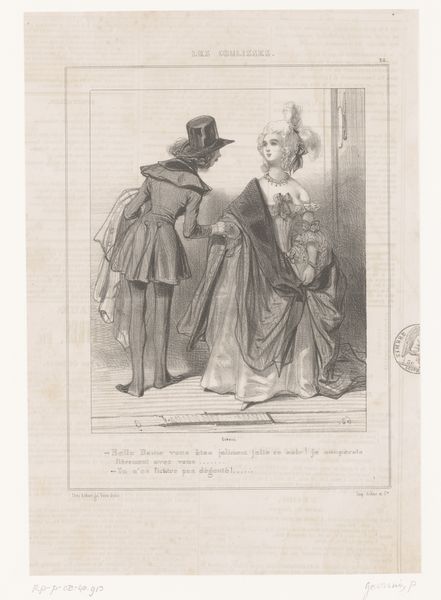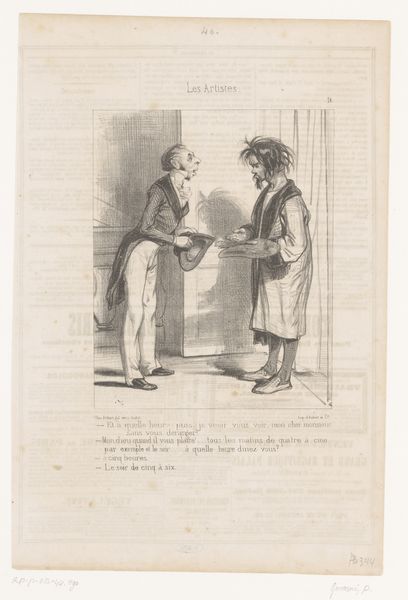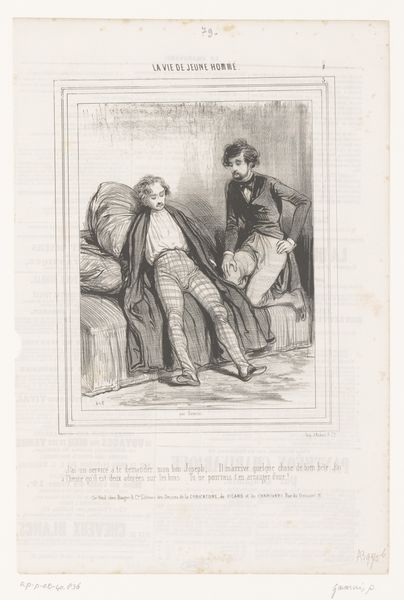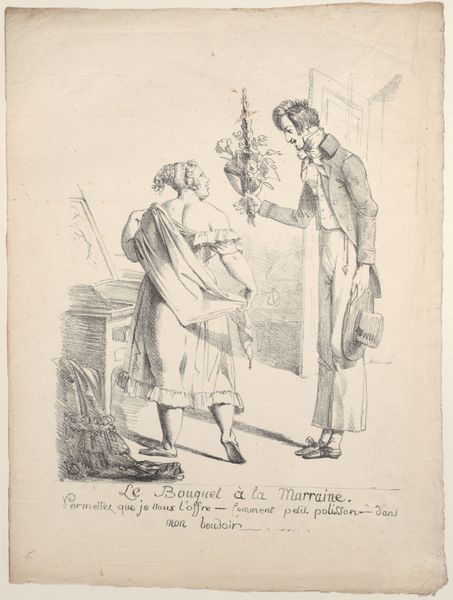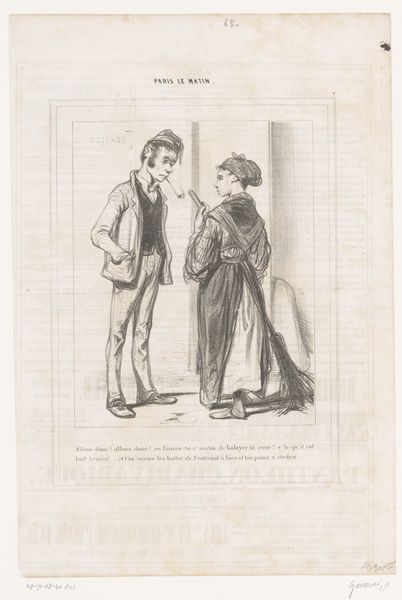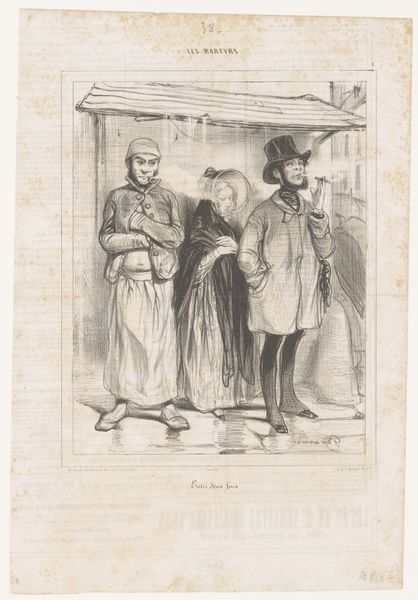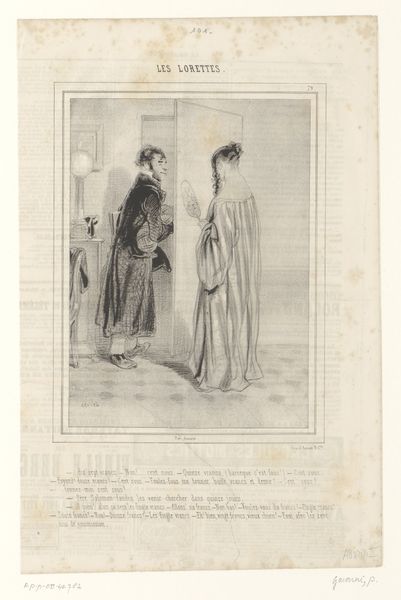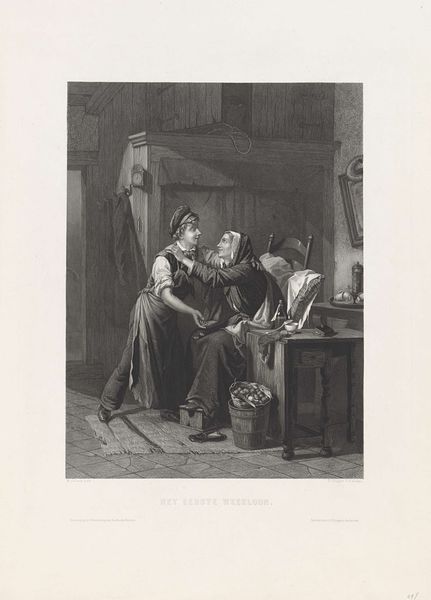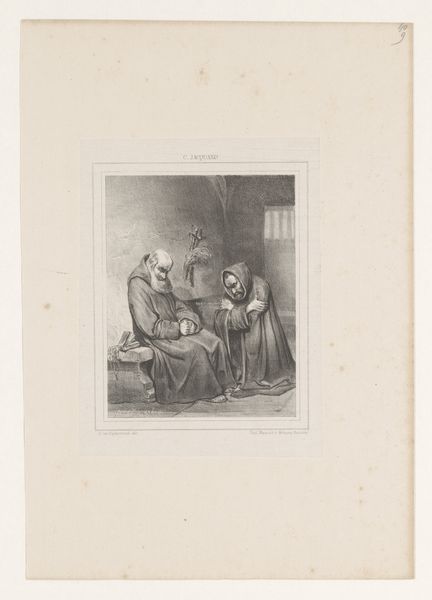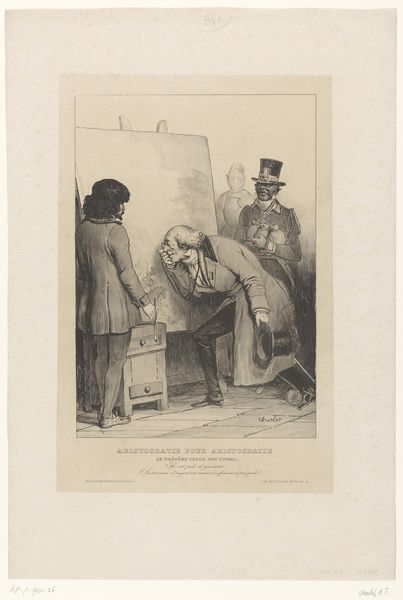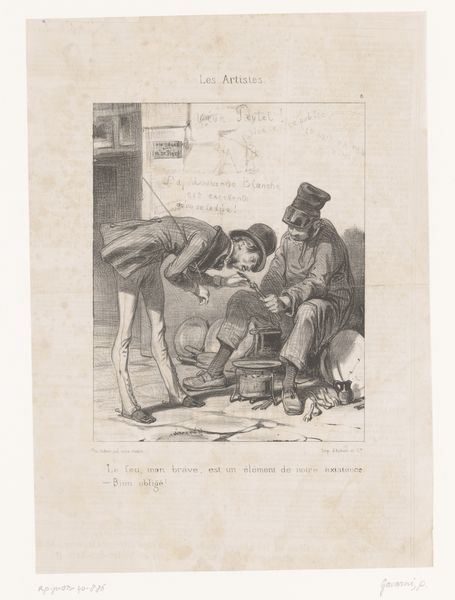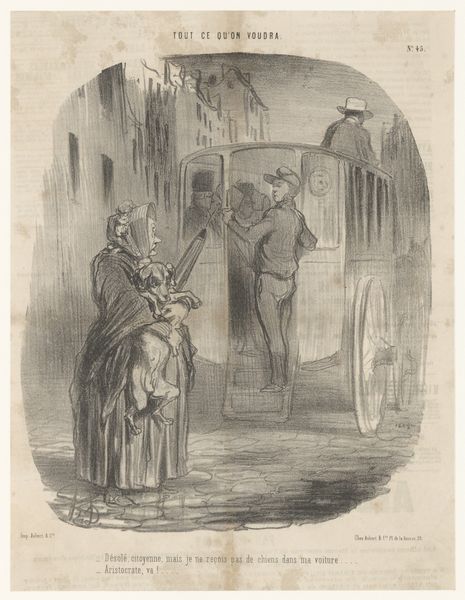
drawing, lithograph, print, paper, ink
#
drawing
#
toned paper
#
light pencil work
#
narrative-art
#
lithograph
# print
#
caricature
#
pencil sketch
#
paper
#
personal sketchbook
#
ink
#
idea generation sketch
#
romanticism
#
pen-ink sketch
#
sketchbook drawing
#
pencil work
#
genre-painting
#
storyboard and sketchbook work
#
sketchbook art
Dimensions: height 292 mm, width 207 mm
Copyright: Rijks Museum: Open Domain
Curator: What a perfectly awkward moment captured by Paul Gavarni in his 1838 lithograph, "Man krijgt arrestatiebevel," housed right here at the Rijksmuseum. Look at the surprised man in his flamboyant dressing gown, seems like he’s been caught rather unawares. Editor: There's a palpable tension in the lithographic lines, wouldn't you say? It feels hastily, almost impatiently made. All this rapid-line work would imply tight deadlines and industrial printing. A fascinating contrast given the context, wouldn't you say? Curator: Oh, absolutely! It is intriguing, especially thinking about Gavarni crafting this on paper using lithography. You can see how he uses these dark inks to create a sense of enclosure—the shadowy figures at the door juxtaposed against the elaborate floral pattern on the robe of the sitter create that marvelous discomfort. Editor: Absolutely, it’s as much a study in material contrasts as it is of social commentary. Consider the production of this work, all these reproductive prints. I suspect we can discern class differences that were reproduced along with these kinds of satirical publications. The narrative implies more than one actant to the situation in this piece—I wonder, are "les maris vengés" here? Curator: Ha, definitely! Gavarni's style does often skew toward such lighthearted narratives. There’s almost a theater-like drama happening – everyone frozen, and the artist being allowed the private vision of what they are seeing and then rendering the moment in ink. What secrets this fellow in the dressing gown harbors, wouldn't you like to know? Editor: I’m drawn to the textures. The quality of the paper itself speaks to an interesting tension between accessibility and the romanticizing of printed matter in the mid-19th century. Here's hoping he will be back at work when they finally get here to arrest him. I do worry that the process can mask inequalities inherent within even a romantic project such as this, the question is, can his circumstances be shifted or will it remain "work"? Curator: That question keeps lingering in the work; this moment pulled into the material, both reflecting the social environment of 19th-century France. It definitely creates more room to discuss. Editor: Precisely; to keep questioning how our interaction with everyday objects also frames our engagement. It provides an accessible way to further view how material impacts society.
Comments
No comments
Be the first to comment and join the conversation on the ultimate creative platform.

